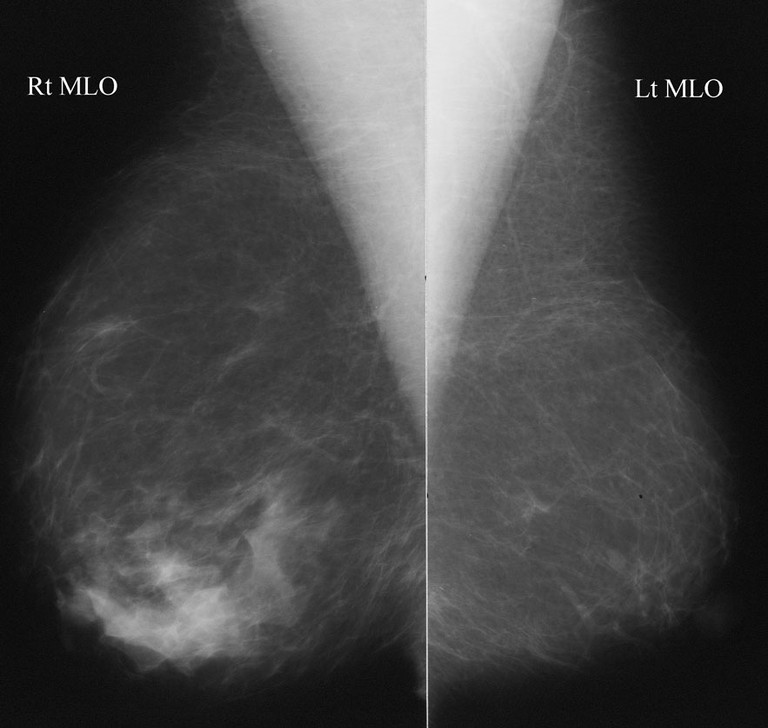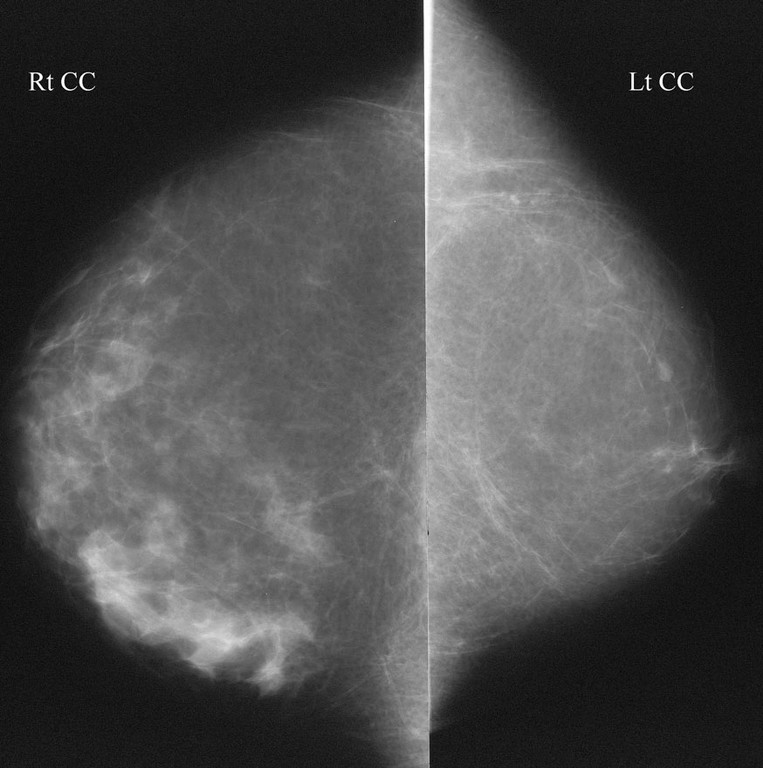Teaching Files
Archived Case 7
Contributed by: Katherine E. Dee, MD -
How would you describe the finding in the lower inner right breast?
Asymmetric Breast TissueFocal Asymmetry
Mass
Architectural Distortion
is present in the lower inner right breast. This is focal because it is seen on both views. It is clearly asymmetric, since there is no comparable density on the left side. However, the density itself does look like breast tissue.
If you said asymmetric breast tissue, this implies that you know with certainty that the density is normal breast tissue. Do we know enough about this finding to say this? Is it stable? Is it palpable?
If you said mass, then you are implying that you are sure this is NOT normal breast tissue. Since the finding looks like breast tissue, this is possible, but less likely. Finally, there is no visible architectural distortion
What is the work-up for FA’s seen at screening?
What is the work-up for FA’s seen at screening?
FA seen at screening is BI-RADS 2 - Benign - Follow-up in 1 yearFA seen at screening is BI-RADS 3 - Probably Benign - follow-up in 6 months
FA seen at screening is BI-RADS 4 - Suspicious - biopsy is recommended
FA seen at screening is BI-RADS 0 - Incomplete - spot compression magnification mammography and ultrasound are recommended.
When a FA is seen on a screening mammogram, and there are no comparisons to document stability, the finding is BI-RADS 0, and spot mags and ultrasound should be performed. At the time of diagostic work-up, it should be determined whether there is a palpable correlate to the density. If so, a biopsy is warranted.
You perform spot mags, and the density still looks like breast tissue. No underlying mass or distortion is found. An ultrasound reveals normal-appearing tissue. The patient reports that she has had a mammogram 10 years ago, but she cannot remember where. Now what is your assessment?
BI-RADS 1 - NormalBI-RADS 2 - Benign
BI-RADS 3 - Probably Benign
BI-RADS 4 - Suspicious
BI-RADS 5 - Highly Suggestive of Malignancy
BI-RADS 0 - Obtain old films for comparison
With a negative diagnostic work-up, this finding most likely represents normal breast tissue. However, there is a small chance that this is an infiltrating carcinoma that is not seen on ultrasound.
It is important to note– having old films would have cleared this up: if the finding were stable, it would be considered BI-RADS 2, Benign. If it were new, larger or denser, it would be considered BI-RADS 4, suspicious.
Thus, because there are no comparisons, and the stability of the finding is unknown, the finding is Probably Benign. A six month follow-up is recommended to ensure stability.
If you answered e. BI-RASDS 0, incomplete, then you are truly an optimist. If hypnosis or other methods succeed in jogging the patient’s memory of her prior mammogram, then you may eventually resolve this recommendation. Documenting 10 years’ stability would be ideal if possible. It is wise to call the finding Probably Benign, and issue an addendum if/when the old films arrive

